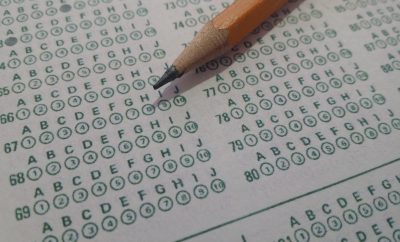
Schools
Thomas M. Cooley Law School in Hot Water
It’s been a rough week for Thomas M. Cooley Law School. I really don’t know which was a harder hit, canceling enrollment for an entire incoming class of first year law students, or losing a $17 million defamation appeal.
A group of legal professionals founded the independent graduate school in 1972 in memory of Justice Thomas McIntyre Cooley. Cooley Law is home to the nation’s largest J.D. program, with four campuses located in Michigan (Ann Arbor, Auburn Hills, Grand Rapids and Lansing) and one campus in Florida (Tampa Bay.) The school released a statement on July 1 outlining its new “aggressive financial management plan.” Due to low enrollment and increasing costs, the institution could no longer maintain its imbalanced budget, and was forced to close admission to its Ann Arbor campus.
The downward trend in law school enrollment is not unique to Cooley Law–this is a nationwide phenomenon. According to The National Law Journal, 132 of the 199 schools accredited by the American Bar Association (ABA) saw declines in their 1L classes in the last 12 months. The ABA published enrollment data shows that Cooley Law’s first year enrollment dropped by 35 percent last year–from 897 students in 2012 to 582 students in 2013. This drastic change caused Cooley Law to make budget cuts by closing off its Ann Arbor campus to new students, and they still haven’t disclosed what will happen to those who were planning to enroll at that campus. They’re also planning faculty and staff layoffs, though no specifics were given about which campuses would see losses.
This news was confirmed the same day as Cooley Law was alerted of its loss in a defamation suit in which they had claimed $17 million in losses. Cooley Law filed to sue a New York law firm for falsely accusing the school of inflating its post-grad employment statistics. It’s a pretty tangled web of lawsuits–but essentially the firm and Cooley Law had brought dueling suits accusing each other of making false statements. The New York judge dismissed the case on July 2, 2014–the same day the school announced its closure of the Ann Arbor Campus to new enrollees.
This isn’t the first time Cooley Law’s employment statistics came into question. Back in 2012, a group of 12 graduates from Cooley Law tried to sue the school for misrepresenting its post-graduation employment statistics. The grads said they wouldn’t have attended the school had they known the real numbers and sued for reimbursement of their purchase. Though the case was dismissed, a few ugly truths were made public during the ruling:
- US News & World Report ranked Cooley Law with the lowest admission standards of any accredited or provisionally accredited law school in the country.
- In 2010, Cooley Law accepted 83% of all applicants.
- In 2010, Cooley Law’s average admissions score was 146 – a national low.
- In 2010, Cooley Law’s average GPA was 2.99 – also a national low.
- In 2008, about 32% of the 1,500 first year students at Cooley Law did not return.
All of these revelations about the recent history of the nation’s largest law school does not bode well for its future But we should use this as a learning experience. First of all, I encourage all current and prospective law students to do their homework. Know your school, and know what you’re paying for! Take into account all aspects of your law school experience. Where is your school located? Is there an easily accessible alumni network? Does your school offer judicial clerkships, externships, clinics, pro bono practice opportunities, and study abroad programs? How much is your tuition, and how does that compare with your anticipated salary? These are all things you should take into consideration before signing up for something that can put you into some serious debt.
Don’t want to end up like the debt-riddled, unemployed Cooley Law grads who couldn’t win a lawsuit against their notorious alma mater? Look past the numbers and the statistics and look into the experience. The judge who ruled against the graduates, Gordon Quist, wrote in his decision that the grads made poor decisions, stating, “with red flags [waving] and cautionary bells ringing an ordinary prudent person would not have relied on the statistics to decide to spend $100,000 or more.”
The closing of Cooley Law’s Ann Arbor campus to new enrollment could indicate a future trend in law school actions nationwide. The decline in law school enrollment is no surprise, and law grads are struggling to find work. But would the industry improve by reducing the number of law schools? I think it would be best for students to be extra diligent in their enrollment decisions. Then by natural selection the weakest law schools that produce the most unsuccessful attorneys would be knocked off the map. It’s not a perfect formula, but there’s definitely a need for some big changes.
—
Natasha Paulmeno (@natashapaulmeno)
Image courtesy of [Matthew DeWaal via Flickr]








Comments